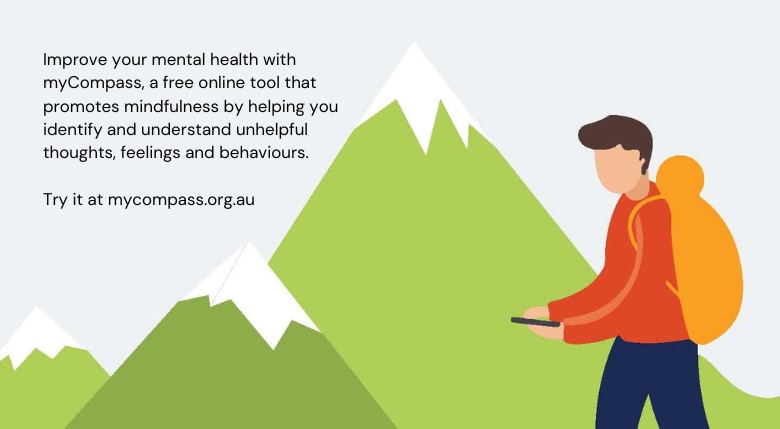What is mindfulness?
We practice mindfulness by maintaining a moment-by-moment awareness of our thoughts, feelings, bodily sensations and the surrounding environment. Mindfulness also involves bringing an attitude of curiosity, non- judgement and compassion to your experiences.
How can mindfulness help?
- Mindfulness reduces stress, anxiety and depression. (Mindfulness actually shrinks the brain’s “fight or flight” centre, the amygdala).
- Mindfulness reduces insomnia, increases your sense of well-being, reduces lethargy and increases energy both mentally and physically.
- Mindfulness is also very effective for pain management.
- Mindfulness sharpens your memory and increases your focus and attention.
- Mindfulness increases empathy and compassion and improves relationships.
- Mindfulness creates clearer, more focused thinking.
- Mindfulness improves self-belief and emotional resilience.
 |
Try it at myCompass
How do you practice mindfulness?
A common mindfulness practice is meditation.
A meditation practice is commonly done sitting, usually with eyes closed, but can also be done lying down or even walking. The informal practice is bringing a mindful awareness into anything and everything that you do.
Try this mindfulness technique
Belly breathing
Find a posture that helps you remain relaxed and alert. Shift from doing to being. Focus on the breath as it enters your nose. Allow yourself to draw your attention to the inhale and the exhale. Now notice the smoothness of the breath and allow your awareness to stay with the length of the inhale and the length of the exhale. You can count for 3 seconds as you breathe in and 3 seconds as you breathe out, allowing your breath to be even and smooth. Continue for a few minutes. Now you can stop counting and return to the sensation of the breath as it comes in through your nostrils and out through your nostrils. Take your left hand and place it on your belly.
Become aware of the breath as it moves through your nose, down your throat and into your belly. Notice how your belly rises as you breathe in and falls towards your spine as you breathe out. This is belly breathing. Now we are going to lengthen the outbreath by slowing it down. The outbreath activates our parasympathetic nervous system which is our rest and digest.



